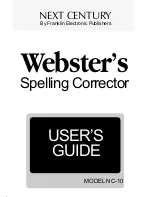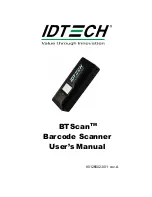
S o f t w a r e C o n f i g u r a t i o n s
24
S
I
C
K
O
p
t
i
c
-
E
l
e
c
t
r
o
n
i
c
B
a
r
C
o
d
e
S
c
a
n
n
e
r
s
3
Figure 3-11 Code 93
Code Length
(free/interval/fixed)
The scanner can be programmed to read bar codes of any length or only those of a particular length (entered by the user):
“free”
- Bar codes of any length between 1 and 49 characters will be read.
“interval” - User may enter a range of lengths within which the scanner will read the codes. Valid Values 1 to 49.
“fixed”
- User may program up to five different fixed lengths to be read by the scanner. Valid Values 1 to 49.
The code length of a printed bar code is calculated as follows:
(number of bars - 7)
Code Length = –––––––––––––––––––––
3
The code length must be input without start/stop characters and without a check digit.
Multiple Reads
(1-99)
Enter the number of identical reads the scanner must decode (in one reading gate) before transmitting the result to the host
device. This process increases output reliability. The selected scanning frequency and the speed at which the bar code is moving
past the CLV should be considered when making this selection. If the number of multiple reads specified by the user is not ful-
filled, the CLV will send the bar code string or error string (software selectable) to the host, along with the error status ST=5 if the
ST value has been placed in the separator.
Output Hex ASCII
A “yes” directs the decoder to output in hex ASCII. A “no” response directs the decoder to output in ASCII.
Decoding Algorithm
(enhanced/standard)
Selecting “enhanced” will direct the CLV to use a 2-step decoding process; “standard” executes a rapid, 1-step decoding process.
CODE 93
An extended alphanumeric code with the following character set: 128 characters (complete ASCII character set); one start/stop
character. A check digit test is always performed, but not output.
















































